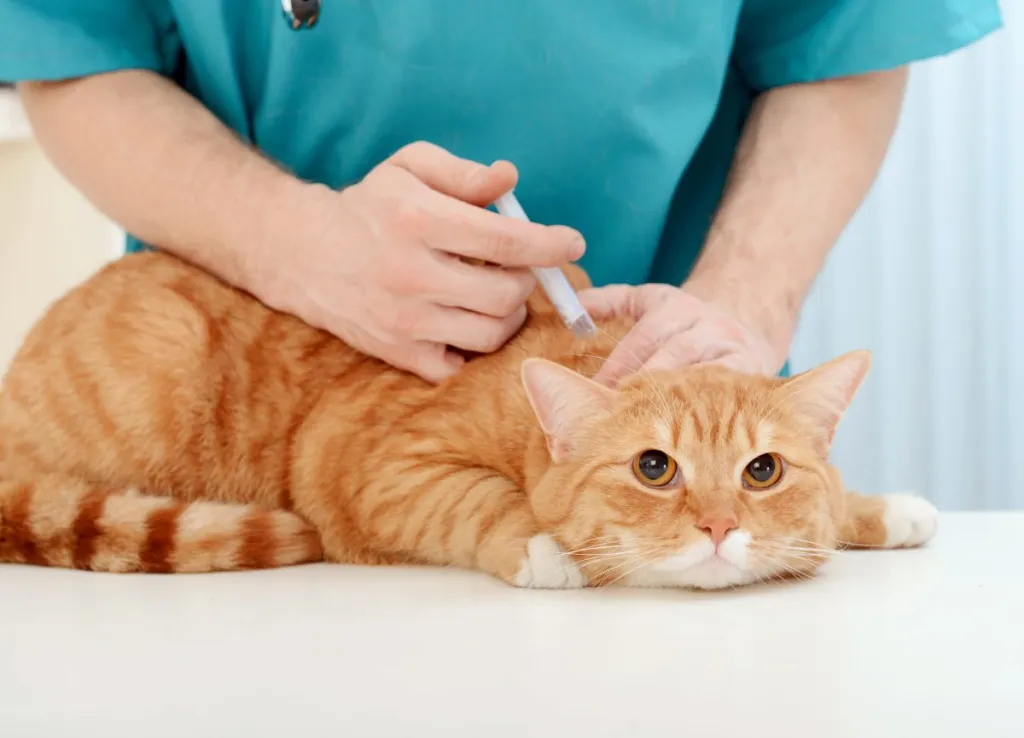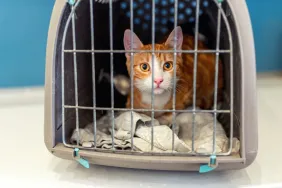Penicillin for cats is an antibiotic medication derived from the Penicillium fungi. It falls under the beta-lactam class of antibiotics and is primarily used to treat bacterial infections. The drug interrupts the building process of the bacterial cell wall, ultimately killing the bacteria. Being one of the oldest types of antibiotics available, penicillin has played a vital role in veterinary medicine due to its effectiveness and general safety when used properly.
Here’s what you should know about the uses, dosage, and side effects of penicillin for cats.
Uses of penicillin for cats
Penicillin is used to treat a variety of bacterial infections in cats. It is particularly effective against gram-positive bacteria — such as Staphylococcus, Streptococcus, and Clostridium species — but can also treat some gram-negative bacterial infections. Common infections treated with penicillin include skin infections, respiratory infections, urinary tract infections, and some types of gastrointestinal infections. It’s also used to prevent infection in felines with wounds or after surgery. In addition to these common uses, vets may employ penicillin as part of the treatment strategy for more severe infections, including septicemia — blood poisoning — and peritonitis — inflammation of the abdominal lining.
It’s worth noting that Penicillin V — the version approved for oral use in humans — has not received FDA approval for use in animals. However, in certain circumstances, veterinarians have the authority to prescribe human-approved medications for pets. This is known as “extra-label” or “off-label use,” indicating the drug is used in a manner not described on its official label. The decision to use this medication for your pet’s specific condition rests with your veterinarian.
Dosage of penicillin for cats
The following is a guideline for the typical use of the drug in cats and must not replace your veterinarian’s advice for your individual pet.
The dosage of penicillin for cats depends on various factors, including the type and severity of the infection, your cat’s weight, and their overall health. Penicillin comes in various forms, including injectable solutions and oral tablets or liquid suspensions. A commonly used injectable form — Penicillin G — may be prescribed in a range between 10,000 and 25,000 units per pound of body weight, administered two to six times per day. Penicillin G is available on the market under brand names like “Crystacillin®,” “Flo-Cillin®,” “Crystiben®,” and “Dual-Pen®.” The recommended dosage for oral penicillin is 5 to 10 mg per pound of body weight, once daily.
The duration of the treatment typically ranges from seven to 14 days, but in some cases, longer treatments may be necessary. It is crucial to complete the full course of antibiotics as prescribed by your vet, even if your cat appears to have recovered. Failing to do so can lead to antibiotic resistance, making the bacteria harder to treat in the future.
Proper storage of penicillin is important. Oral tablets should be kept in a cool, dry place, away from sunlight — preferably at a controlled temperature between 68-77°F. Injectable solutions might require refrigeration. Always check the storage requirements on the medication label or consult with your veterinarian.
Side effects of penicillin for cats

While penicillin is generally safe for cats, some may experience side effects. These side effects are usually mild, but in rare cases, more serious reactions can occur. Side effects may include:
In case of an allergic reaction, it’s critical to seek veterinary care promptly. Other less common side effects may include changes in behavior or seizures, although these are extremely rare. Long-term or repeated use of penicillin might also lead to a secondary infection due to the alteration of normal gut flora.
Penicillin may interact with some medications, including certain antibiotics, as well as drugs such as methotrexate and probenecid. Before starting treatment with penicillin, make sure to disclose your cat’s full medical history to your veterinarian. This includes any past allergic reactions to penicillin or other antibiotics, as this can significantly influence the choice of medication. Moreover, it’s important to exercise extra caution when administering antibiotics to pregnant or nursing cats.
If you miss a dose of penicillin for your cat, talk to your veterinarian for guidance. Generally, they might advise you to administer the missed dose as soon as you remember. However, if the time is close to your pet’s next scheduled dose, you might be instructed to skip the missed one and simply continue with the regular dosing regimen. It’s important to avoid giving extra or double doses.









